Pork Estofado with saba bananas, carrots, Chinese sausage, and a sweet and savory sauce is a hearty and flavorful dish the whole family will love. Perfect with steamed rice!
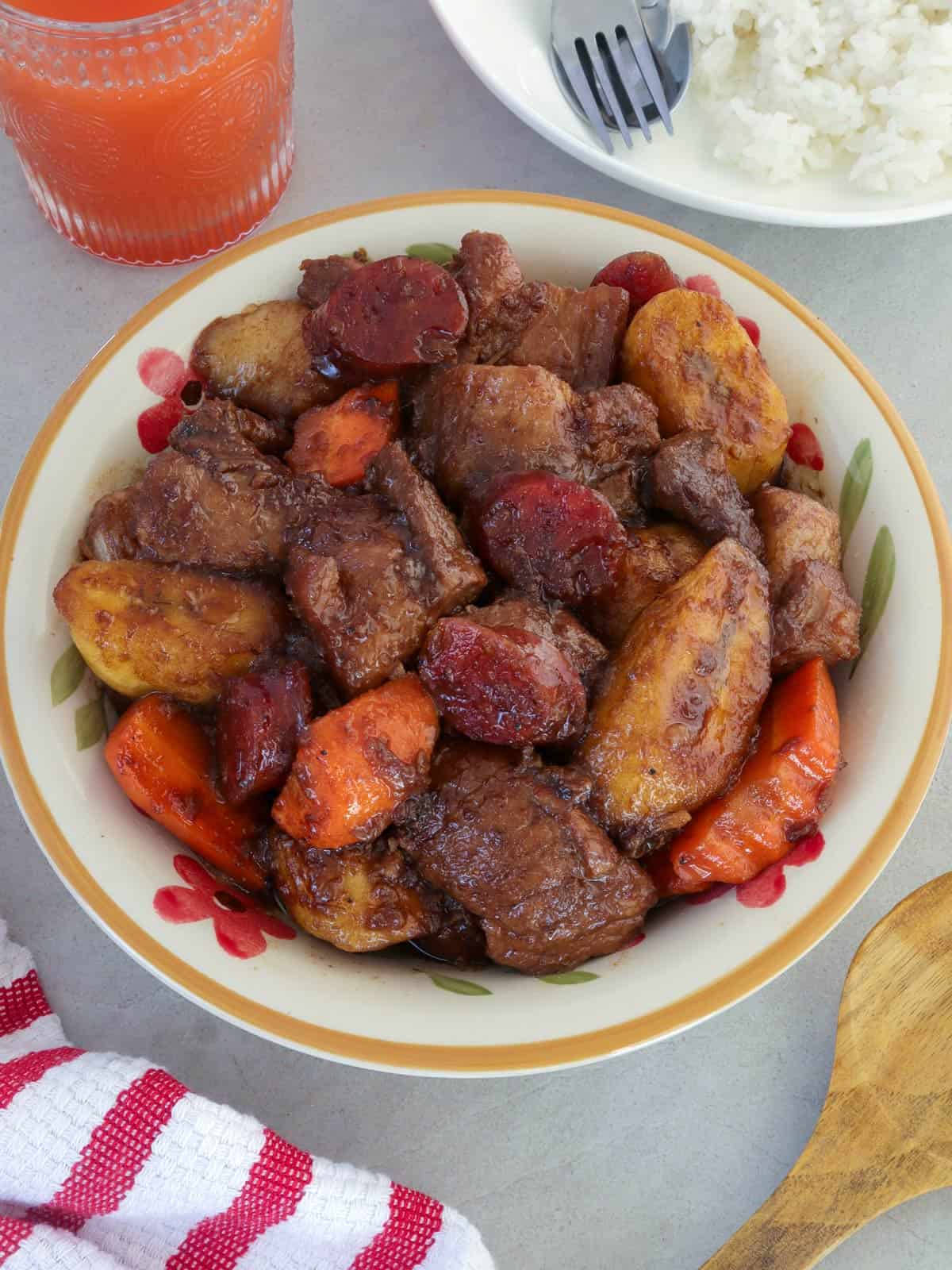
I love experimenting in the kitchen. I think it's fascinating how a simple addition, subtraction, or substitution of one or two ingredients can completely transform one dish into another.
Take, for instance, our tomato-based meat stews. They're similar in their mode of preparation and the use of onions, garlic, and tomatoes. Yet by changing up a few parts, such as inserting a wick of fat in mechado or adding chili peppers in calderata, green peas in afritada, or liver in menudo, we get different sets of flavor.
Now, the perennial adobo. Add brown sugar and banana blossoms to the ubiquitous soy sauce and vinegar braising mixture, and you have paksiw na pata. Replace the banana blossoms with saba bananas, throw in some carrots and Chinese sausages, and you have this delicious pork estofado.
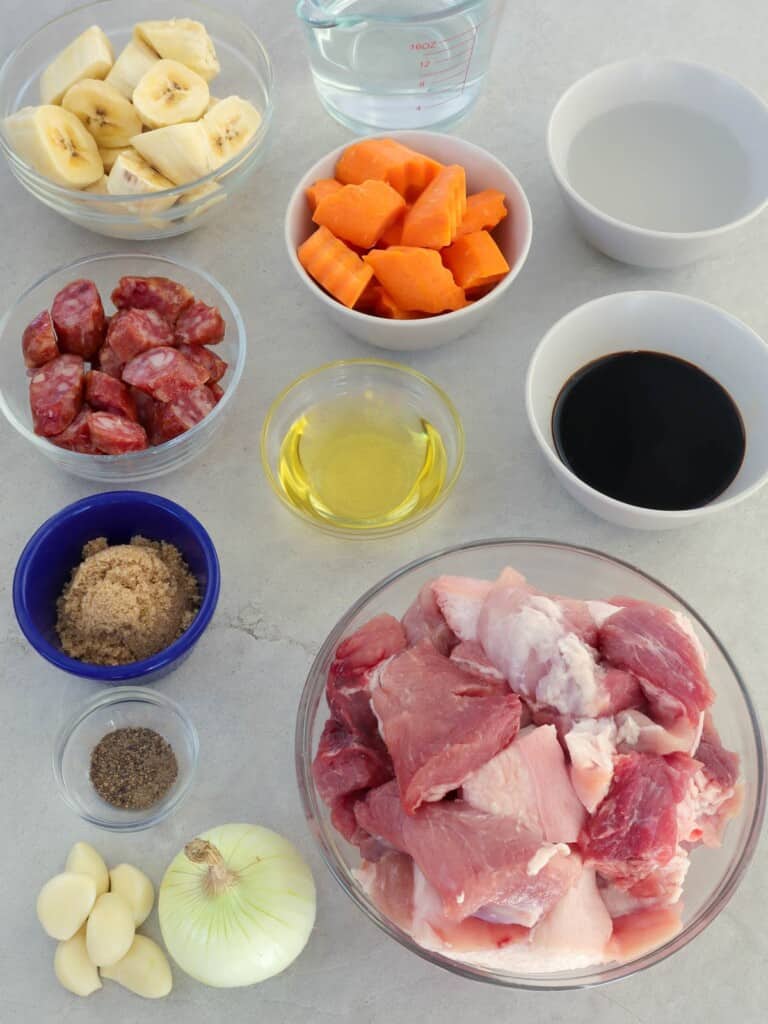
Ingredient notes
- Pork- the recipe uses pork shoulder, but pork belly, leg, or shanks are also good options if you prefer a fattier cut
- Bananas- saba (cardaba) cultivar, which are cooking bananas
- Carrots- adds a touch of sweetness and extends the dish
- Chinese sausage- called lap cheong or lap chong
- Sugar- use brown sugar instead of white; it has a slightly less concentrated sweetness and contains molasses for extra depth of flavor
- Vinegar- use cane vinegar for best results.
- Soy sauce- adds saltiness and umami flavor
- Salt and pepper- season to taste
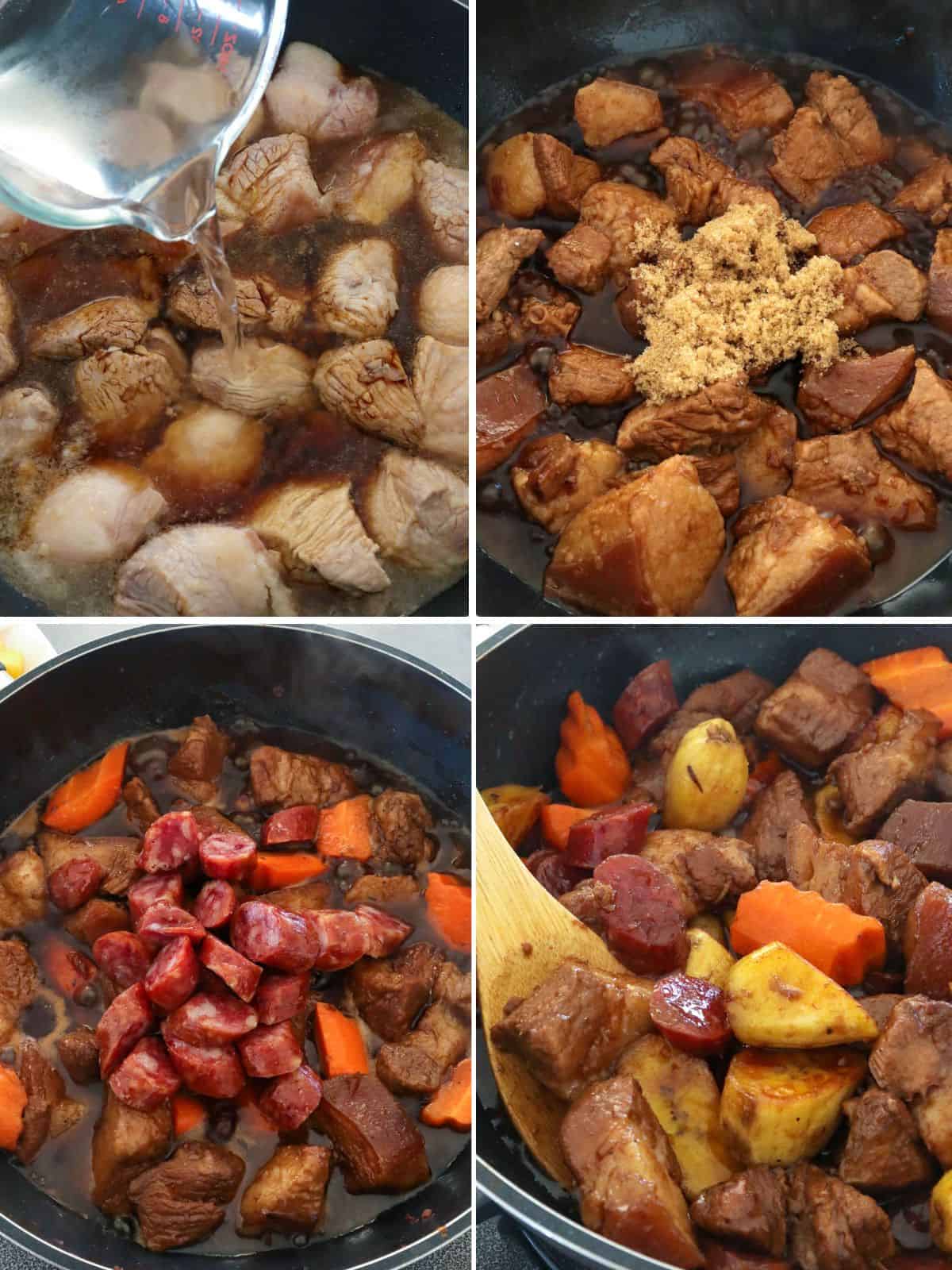
Cooking tips
- Slice the meat into uniform sizes to ensure even cooking.
- For the best texture, use ripe but firm saba bananas. Pan-fry until lightly browned before adding it to the stew to keep it from falling apart.
- Sear the meat to add color and depth of flavor.
- Allow the vinegar to boil uncovered and without stirring for a few minutes before adding the soy sauce and water to cook off the strong acid taste.
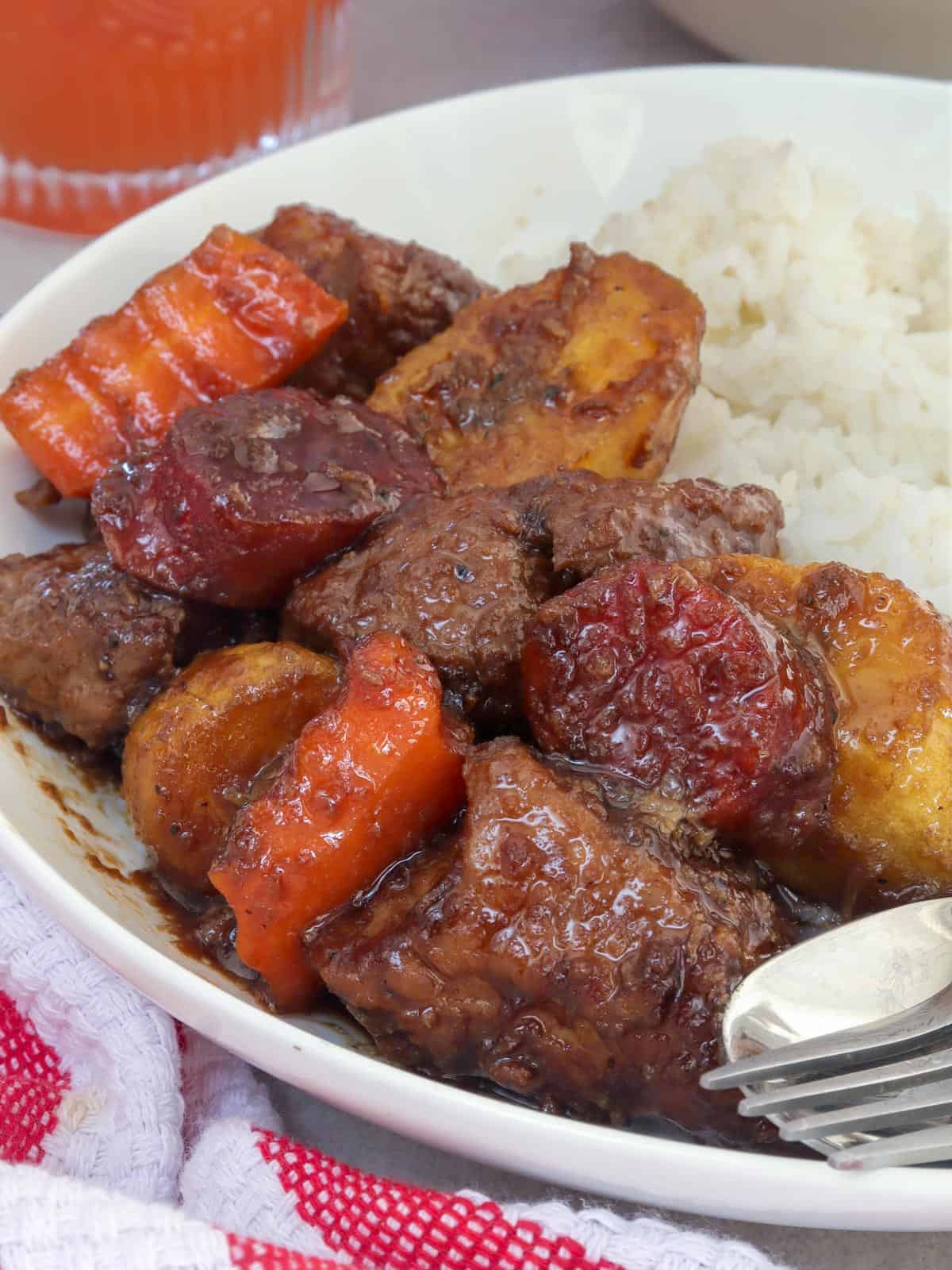
How to serve and store
- Serve with steamed rice for a hearty lunch or dinner.
- Estofado is a great make-ahead meal as it freezes and reheats well. To store for future use, allow to cool completely and transfer to a container with a tight-fitting lid. Refrigerate for up to 3 days or freeze for up to 2 months.
- To reheat, place in a saucepan and heat until the internal temperature reads 165 F.
More pork recipes
Ingredients
- ¼ cup canola oil
- 4 saba bananas, peeled and cut into 1-inch thick crosswise
- 1 onion, peeled and chopped
- 6 cloves garlic, peeled and minced
- 2 pounds pork shoulder, cut into 2-inch cubes
- ¾ cup vinegar
- ½ cup soy sauce
- 1 cup water
- ¼ teaspoon pepper
- 3 tablespoons brown sugar
- 1 large carrot, peeled and cut into 1-inch thick chunks
- 3 Chinese sausage, cut into ½-inch thick
Instructions
- In a wide skillet, heat oil. Add bananas and cook, turning once or twice, until lightly browned. Remove from pan and drain on paper towels.
- Remove oil from the pan except for about 2 tablespoons. Add onions and garlic and cook until softened.
- Add pork and cook, stirring occasionally, until lightly browned.
- Add vinegar and continue to cook, without stirring, for about 2 to 3 minutes.
- Add soy sauce and water and bring to a boil, skimming scum that may float on top.
- Lower heat, cover and cook for about 30 to 40 minutes or until meat is tender.
- Add sugar and stir until dissolved.
- Season with pepper to taste.
- Add carrots and cook for about 1 to 2 minutes or until tender.
- Season with salt to taste.
- Add Chinese sausage and bananas.
- Continue to cook until pork is fork-tender and sauce is reduced. Serve hot.
Notes
- Slice the meat into uniform sizes to ensure even cooking.
- For the best texture, use ripe but firm saba bananas. Pan-fry until lightly browned before adding it to the stew to keep it from falling apart.
- Sear the meat to add color and depth of flavor.
- Allow the vinegar to boil uncovered and without stirring for a few minutes before adding the soy sauce and water to cook off the strong acid taste.
Video

Nutrition Information
“This website provides approximate nutrition information for convenience and as a courtesy only. Nutrition data is gathered primarily from the USDA Food Composition Database, whenever available, or otherwise other online calculators.”

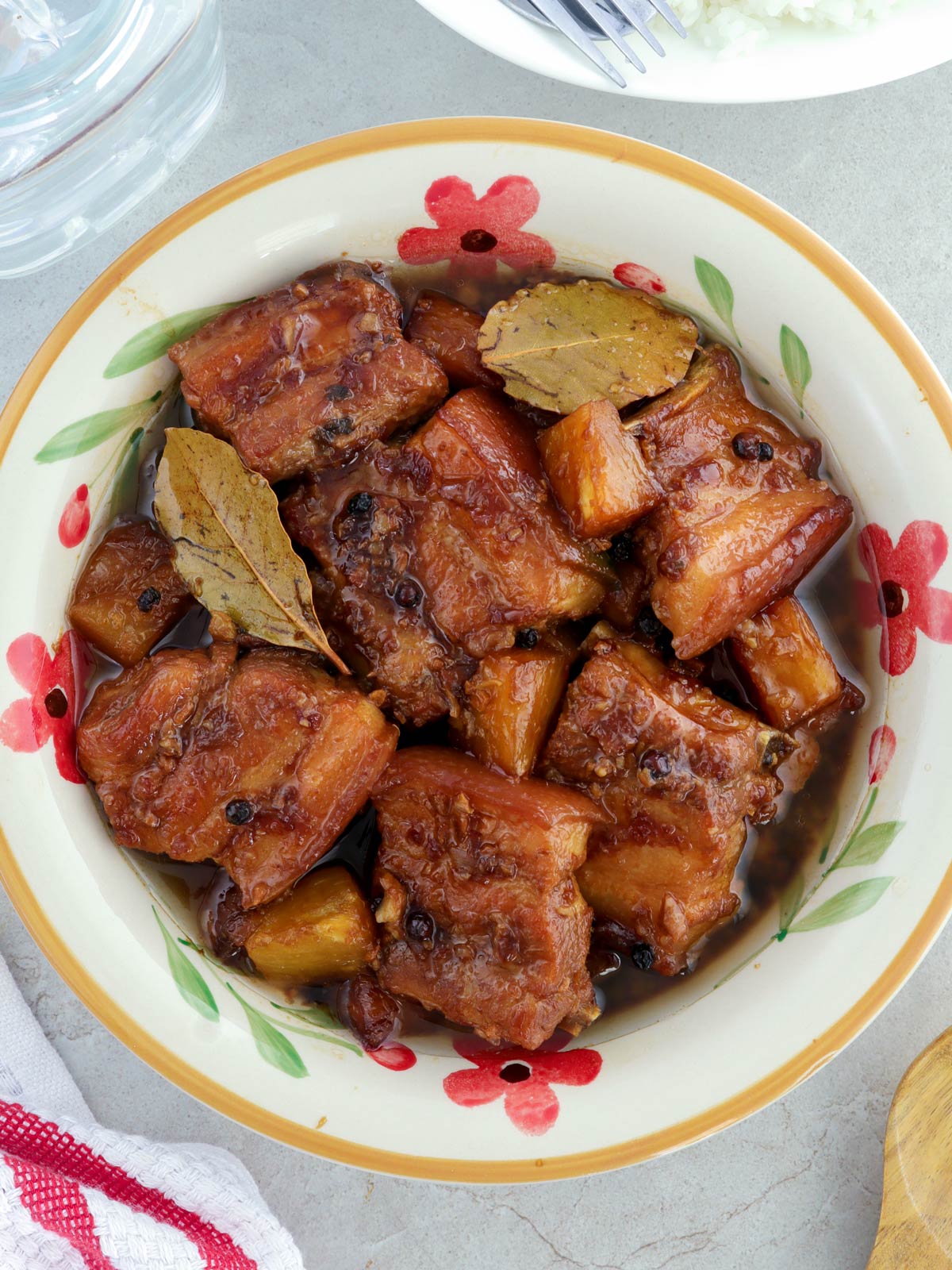
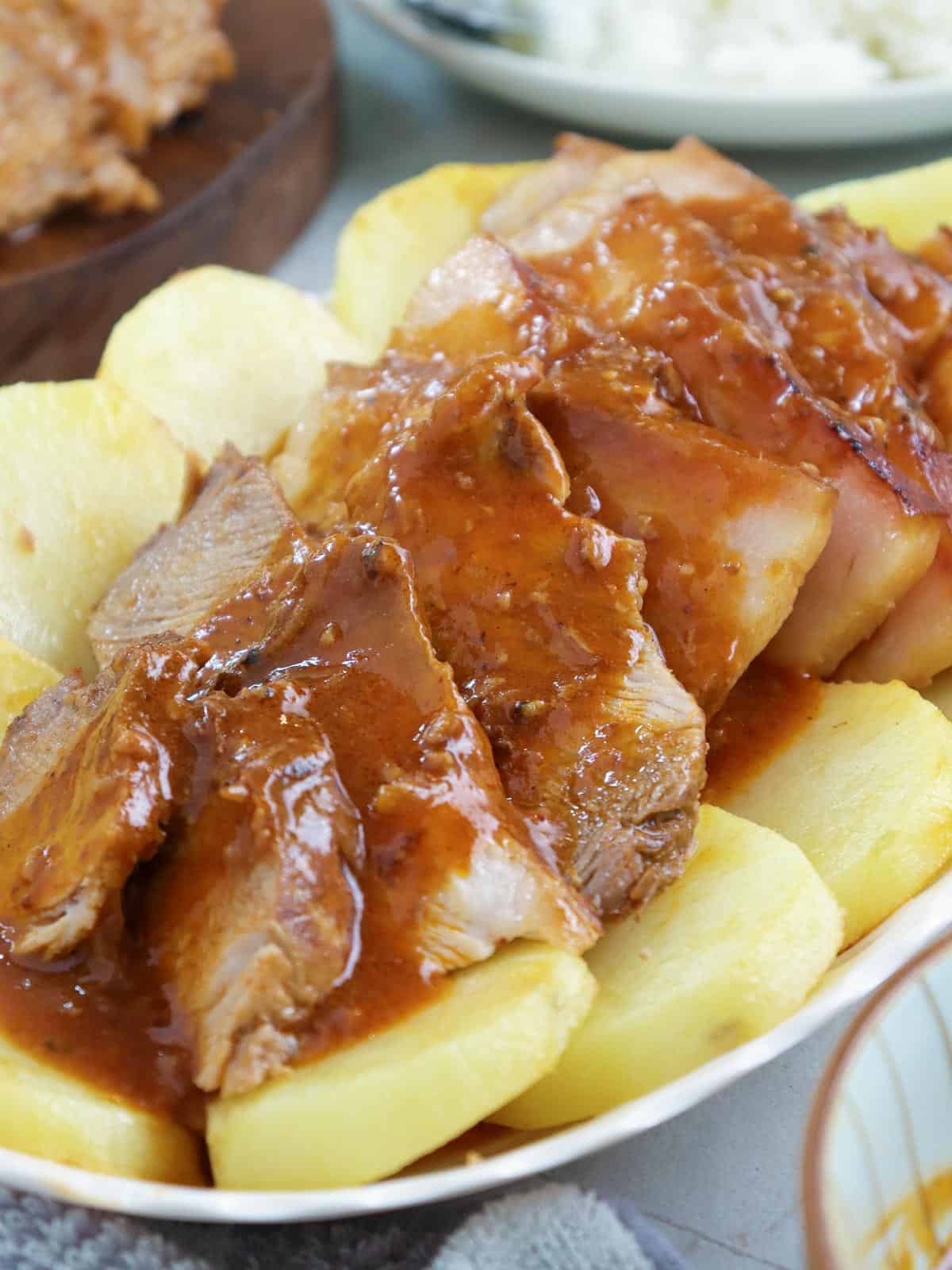
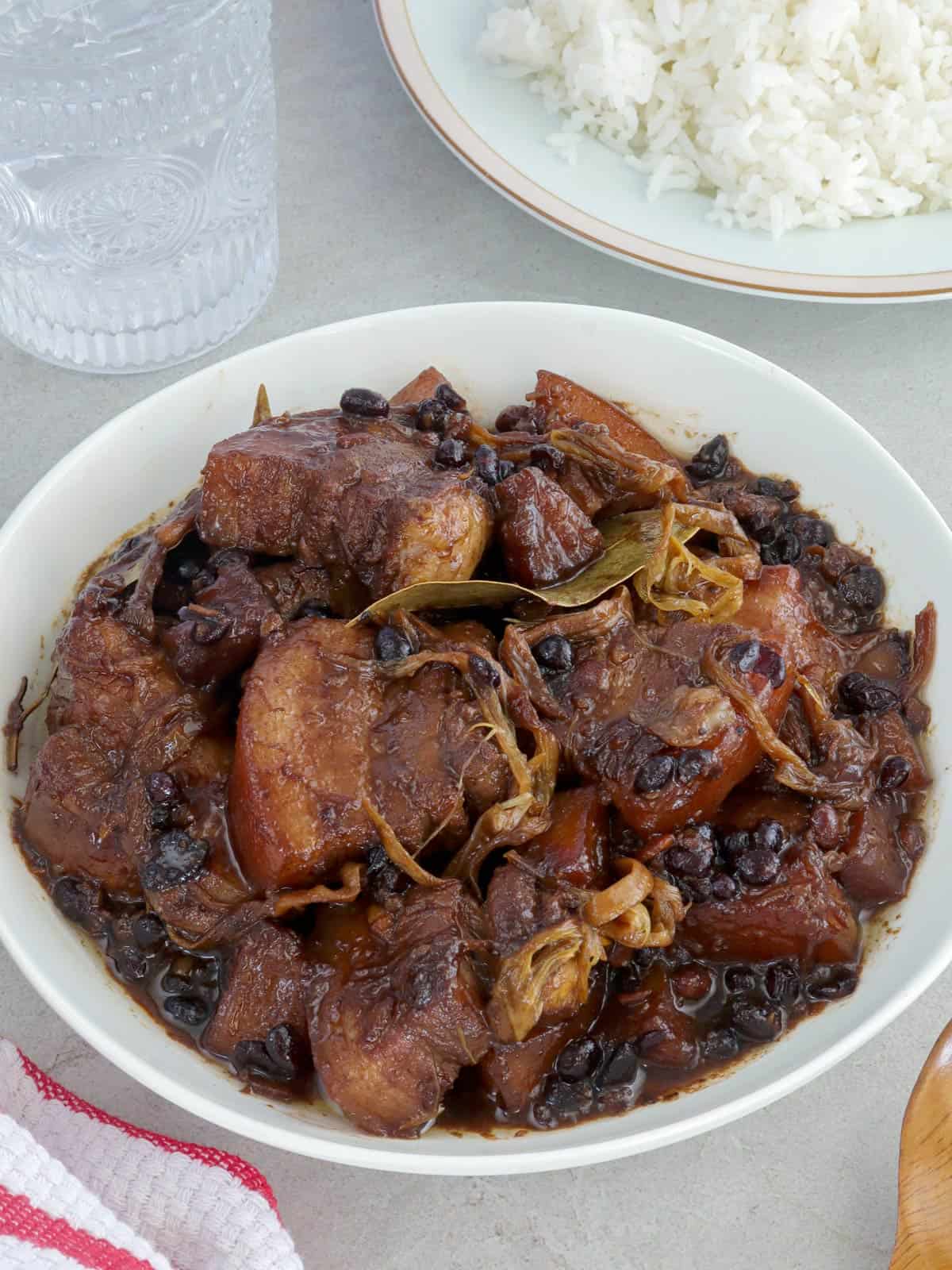
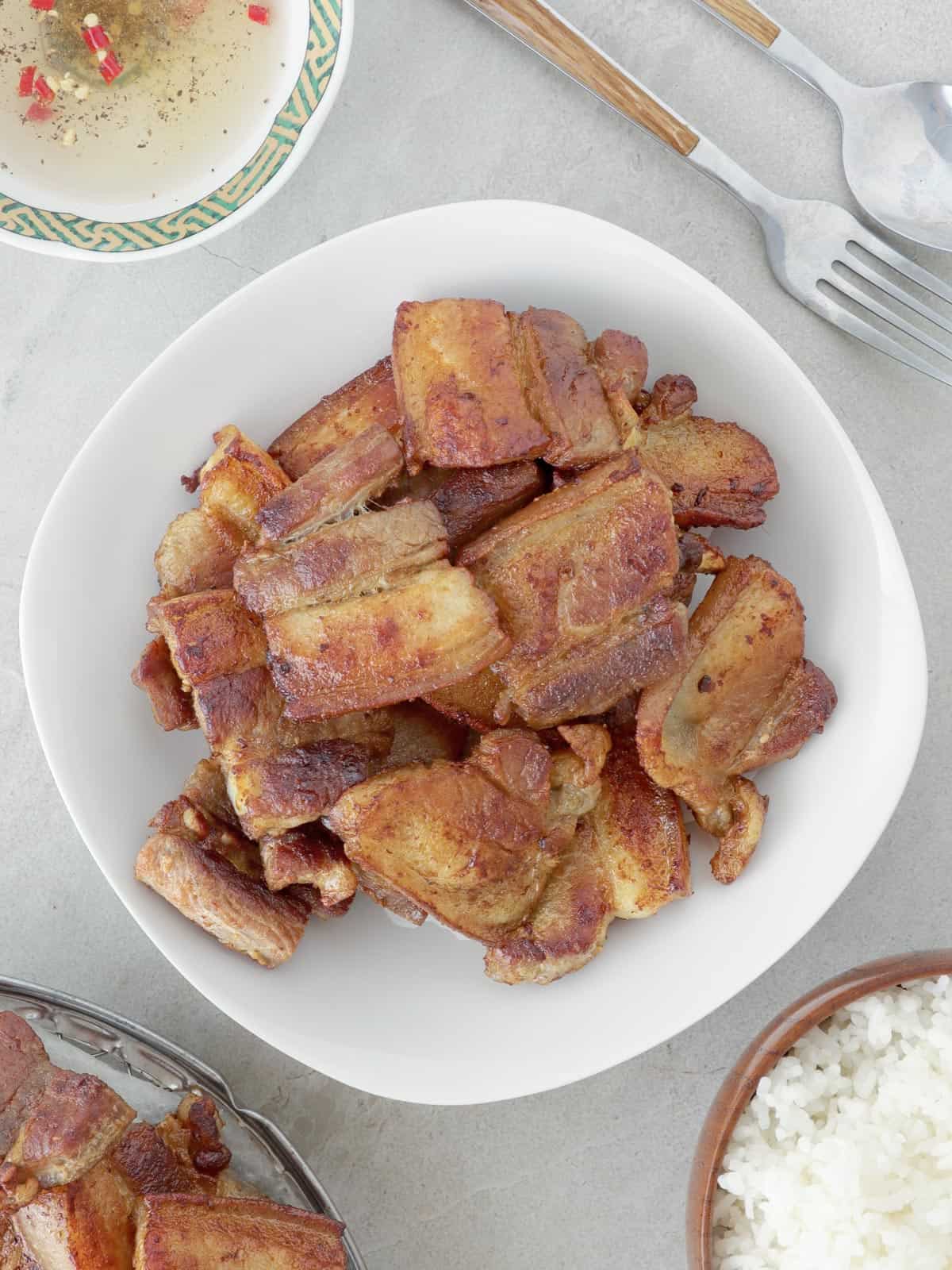
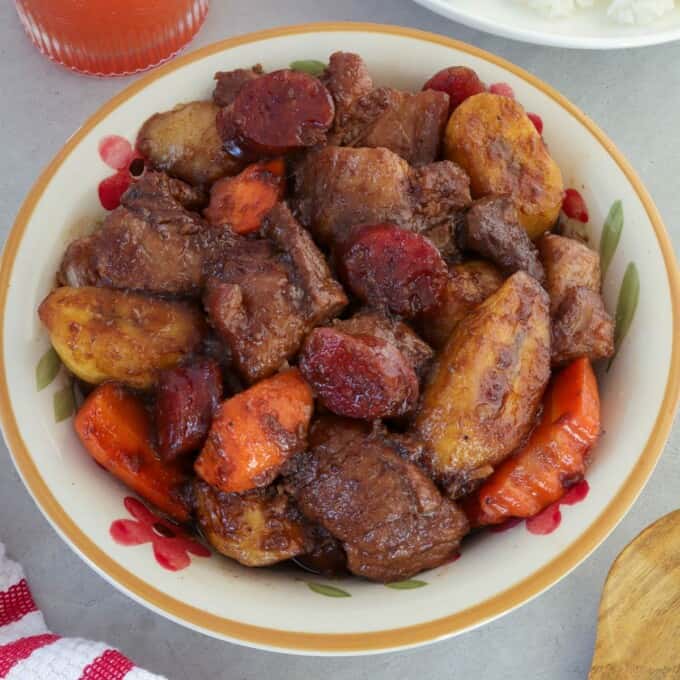
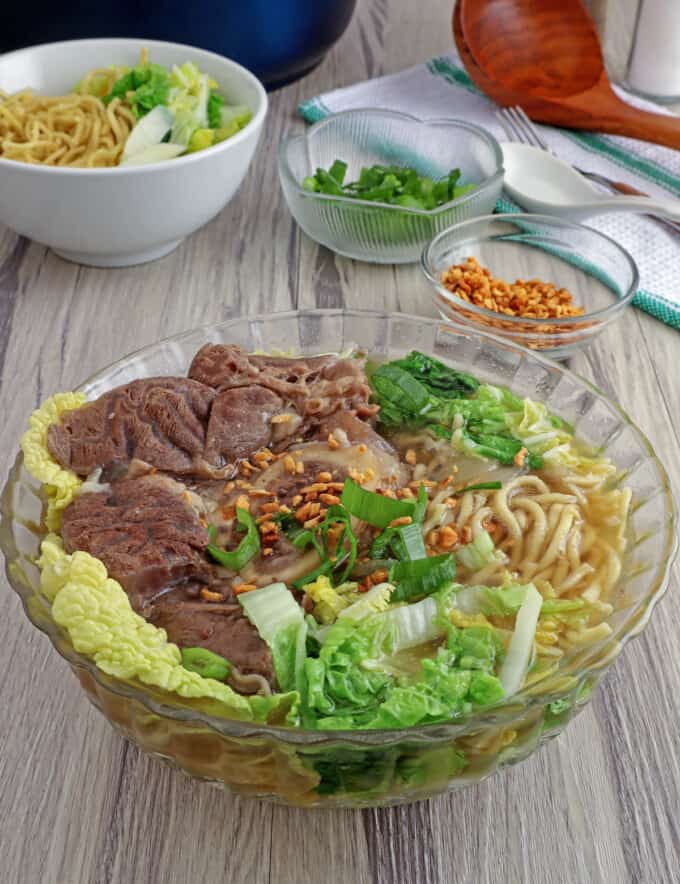
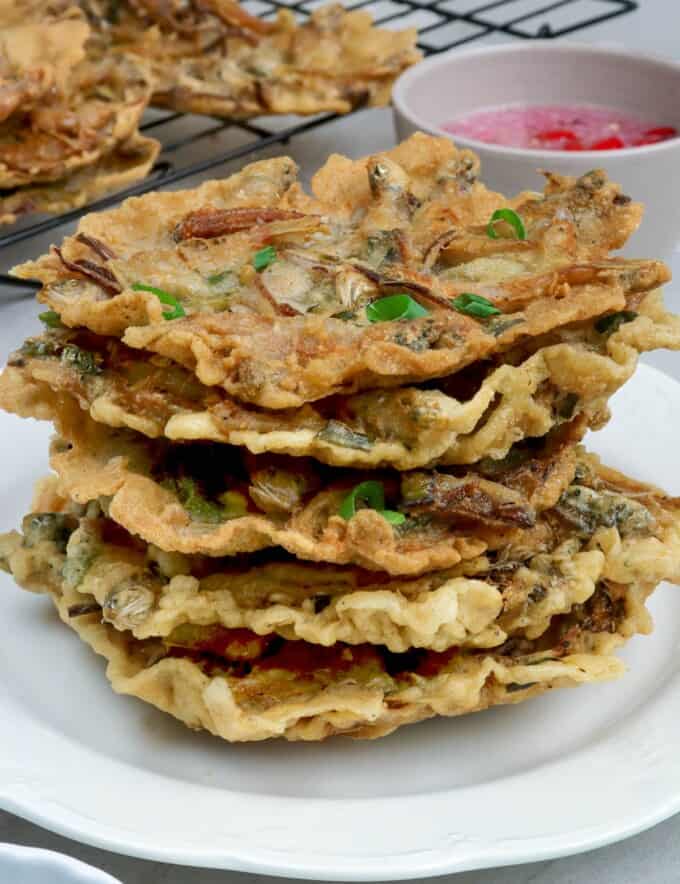
Connie says
Can I use plantain instead of saba, no saba where I am other than the boiled frozen type in an Asian store
Vicky Baron says
I am a new cooker and learning new recipes, so Kawaling Pinoy is really helpful to me. I like to receive your recipes to help me to be a better cooker.
More power!!!👍
Rachel says
This is an absolute delicious dish! I wouldn't change a thing!
Marife says
Thank you, Subrang sarap at perfect yung lasa 🥰
Lalaine Manalo says
You're welcome. Glad you enjoyed it 🙂
Prela says
Thanks for Kawaling Pinoy ifinally cooked goodvrecipe.Delicious!
Lalaine Manalo says
I am glad you liked it 🙂
Kirsten says
Hello po I'm Kirsten can i please use your recipe for my ibooks project. I will give you the proper credits. Thank you!
Lalaine says
Hello Pamela
Hope you give it a try 🙂
Pamela @ Brooklyn Farm Girl says
This is a perfect dinner recipe! Can't wait to make it and take a big bite!